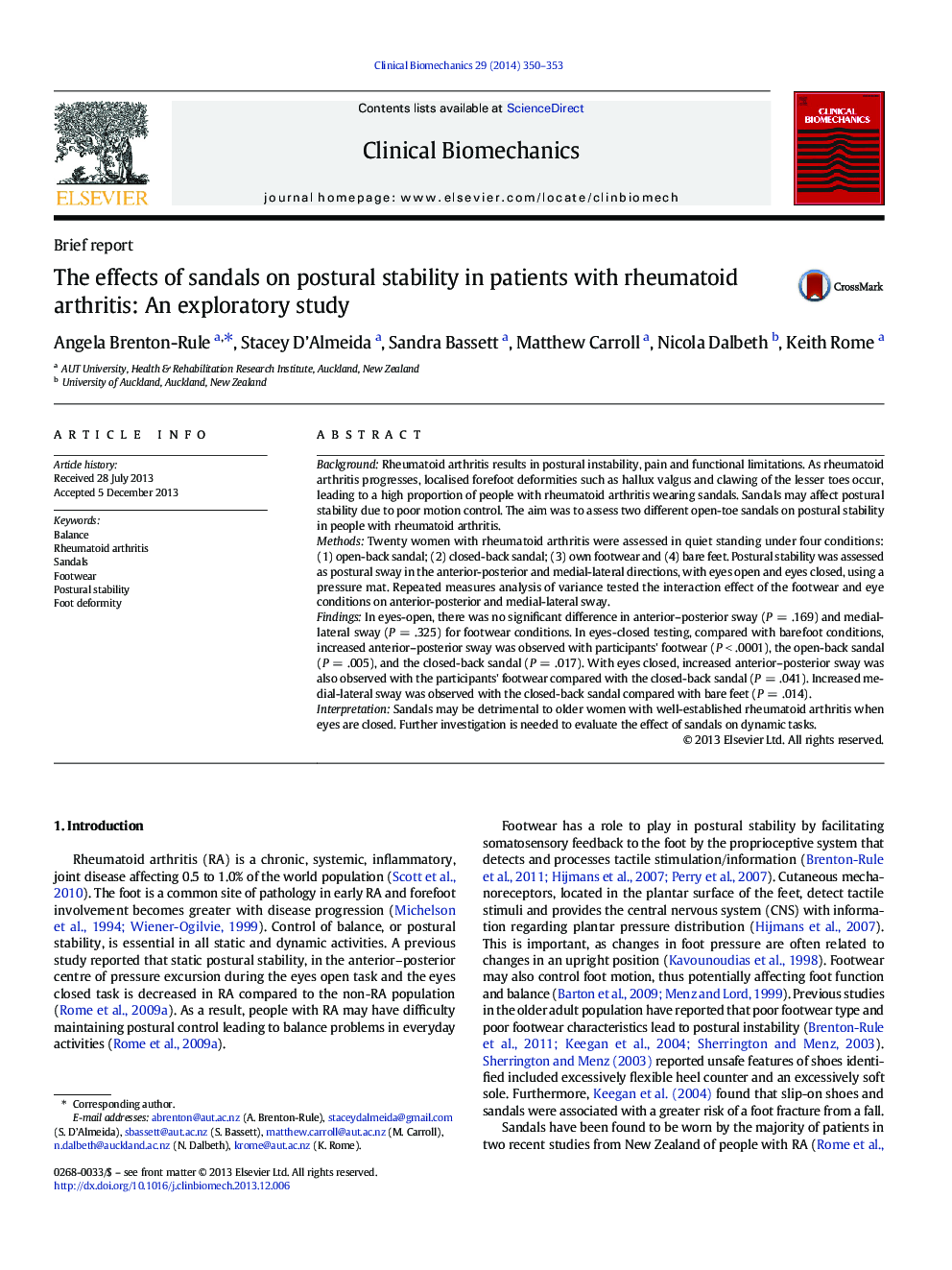| Article ID | Journal | Published Year | Pages | File Type |
|---|---|---|---|---|
| 4050290 | Clinical Biomechanics | 2014 | 4 Pages |
BackgroundRheumatoid arthritis results in postural instability, pain and functional limitations. As rheumatoid arthritis progresses, localised forefoot deformities such as hallux valgus and clawing of the lesser toes occur, leading to a high proportion of people with rheumatoid arthritis wearing sandals. Sandals may affect postural stability due to poor motion control. The aim was to assess two different open-toe sandals on postural stability in people with rheumatoid arthritis.MethodsTwenty women with rheumatoid arthritis were assessed in quiet standing under four conditions: (1) open-back sandal; (2) closed-back sandal; (3) own footwear and (4) bare feet. Postural stability was assessed as postural sway in the anterior-posterior and medial-lateral directions, with eyes open and eyes closed, using a pressure mat. Repeated measures analysis of variance tested the interaction effect of the footwear and eye conditions on anterior-posterior and medial-lateral sway.FindingsIn eyes-open, there was no significant difference in anterior–posterior sway (P = .169) and medial-lateral sway (P = .325) for footwear conditions. In eyes-closed testing, compared with barefoot conditions, increased anterior–posterior sway was observed with participants' footwear (P < .0001), the open-back sandal (P = .005), and the closed-back sandal (P = .017). With eyes closed, increased anterior–posterior sway was also observed with the participants' footwear compared with the closed-back sandal (P = .041). Increased medial-lateral sway was observed with the closed-back sandal compared with bare feet (P = .014).InterpretationSandals may be detrimental to older women with well-established rheumatoid arthritis when eyes are closed. Further investigation is needed to evaluate the effect of sandals on dynamic tasks.
